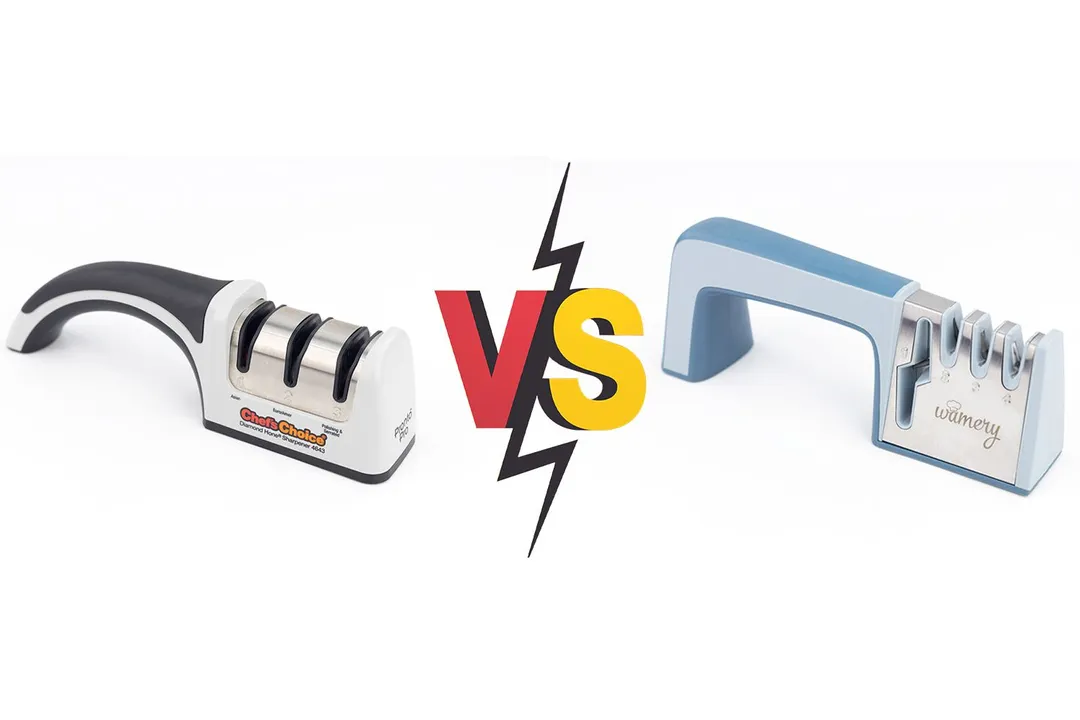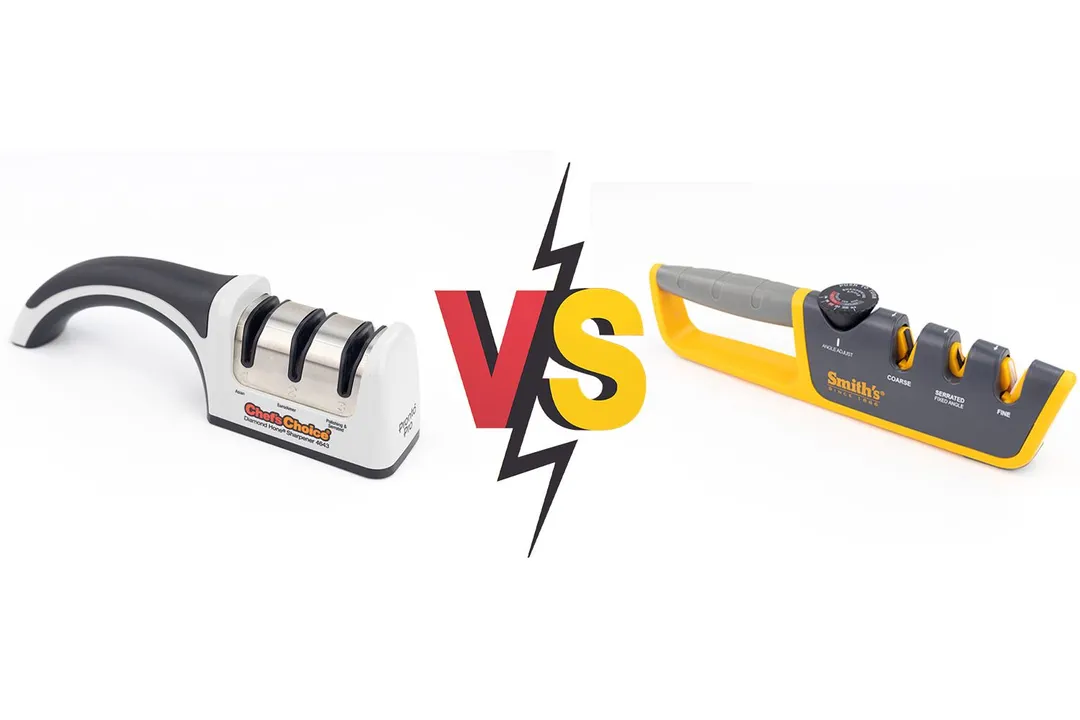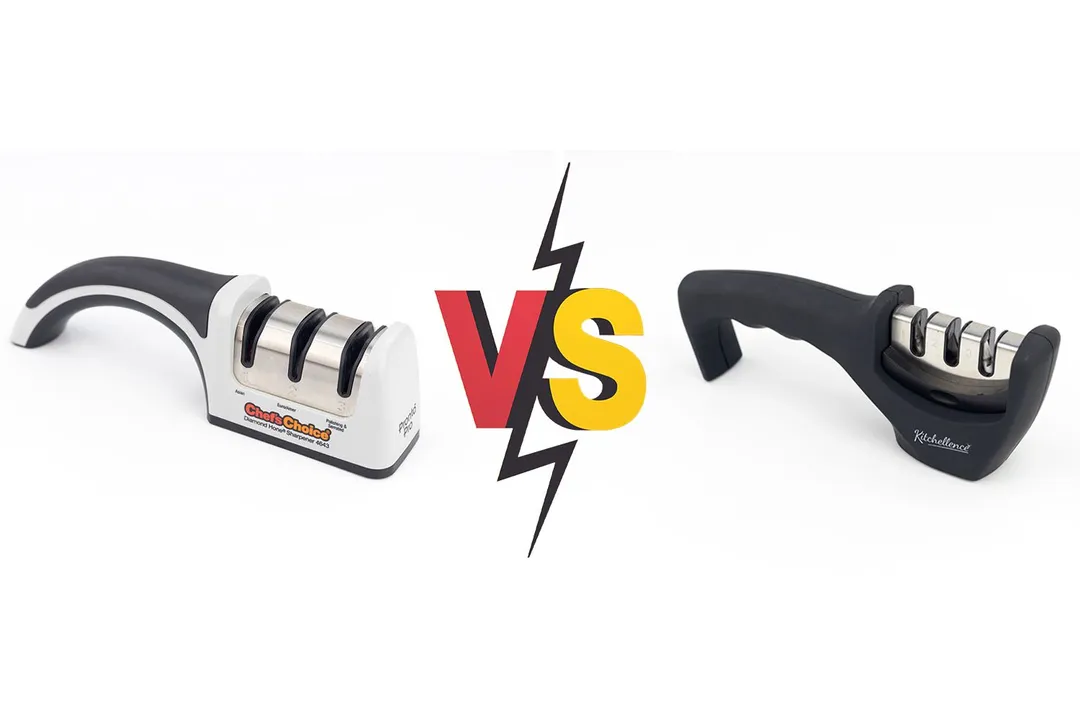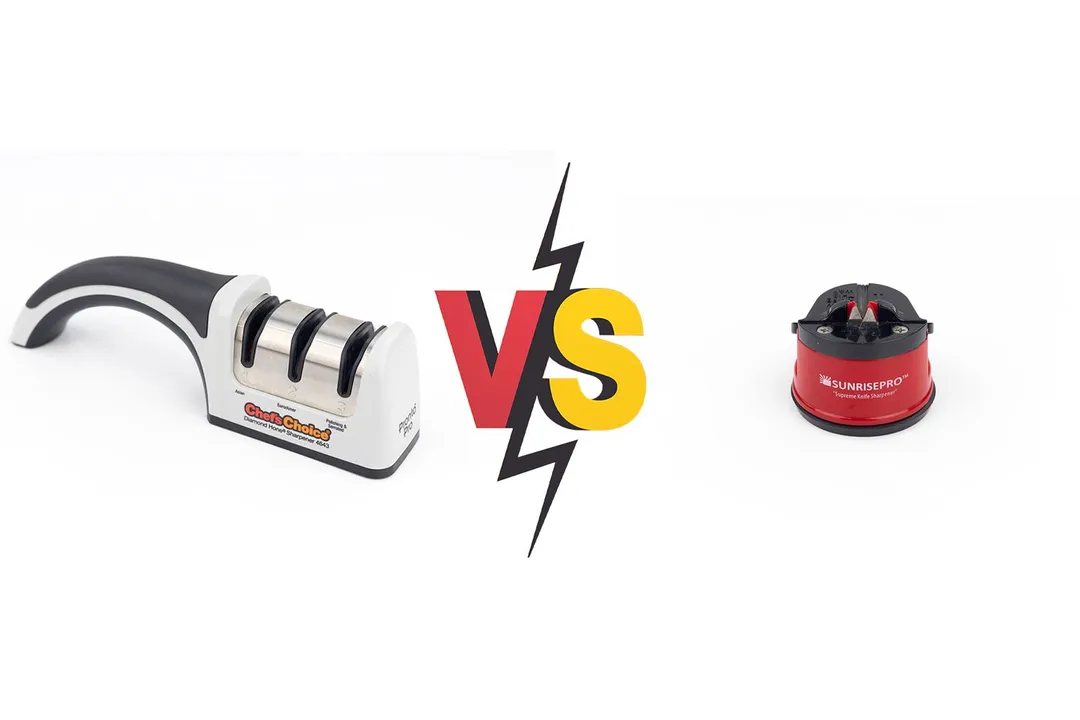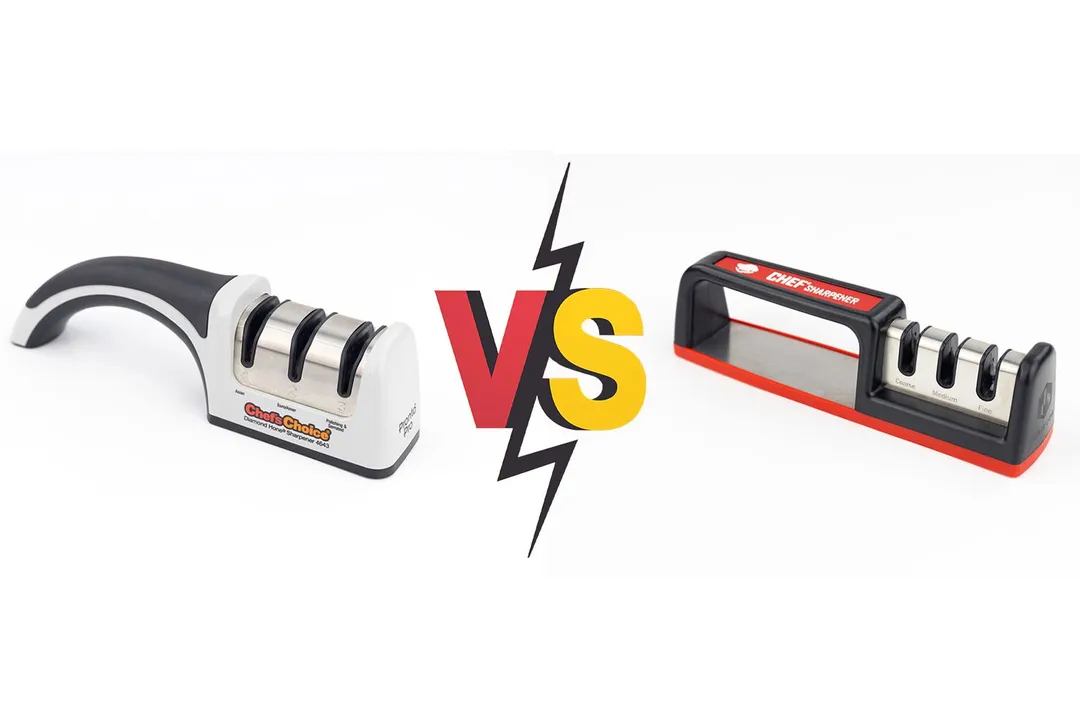Our recommendations are made independently through Research & Testing. We may receive commissions from purchases made via our links.
Chef's Choice 4643 vs. Zwilling 4-Stage Manual Sharpener Side-by-Side Comparison
The Chef's Choice 4643 vs. Zwilling 4-stage manual sharpener. How two of the most expensive pull-through sharpeners measure up against each other.
Chef's Choice 4643
Tested Using Methodology v1.1Zwilling Henckels
Tested Using Methodology v1.1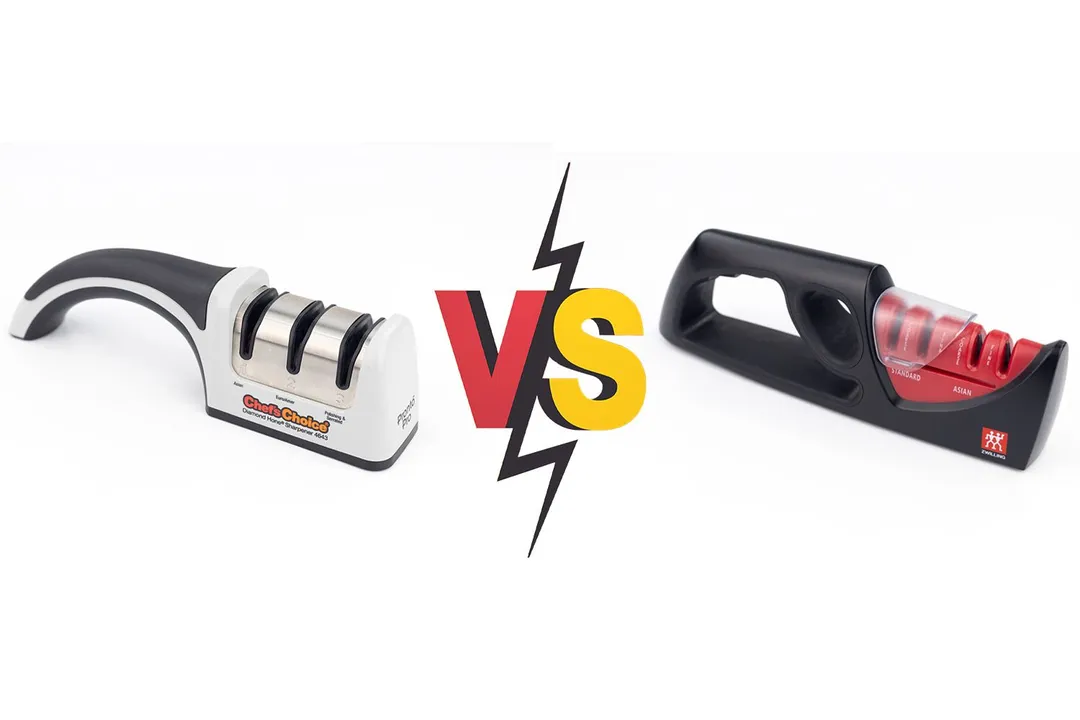
Overall Verdict
The Chef's Choice 4643 and the Zwilling are multi-angle sharpeners and both belong to the more expensive side of the price spectrum. Unfortunately, neither offered a performance to match its price.
Each took 4 and 3 minutes respectively to complete our speed test, against an average of a few seconds over 2 minutes. They both produced a sharper edge but not to any significant degree. The former fared better in terms of material retention while the latter produced a smoother and straighter edge.
The Chef's Choice 4643 enjoys better stability thanks to its wide base and low center of gravity. The Zwilling sharpener, while seemingly made of premium materials, features a narrow body that kept threatening to tip over during sharpening.
Pros & Cons
- Works with 20° and 15° edges
- Compatible with serrated blades
- Grippy handle
- Neat, ergonomic overall design
- Substantial weight
- Sharpens both Asian and standard knives
- Strong build, high-quality body material
- Slot cover
- Beautiful design
- Expensive price
- Awkward slot layout
- Brittle sharpening blades
- Anti-slip pad doesn’t fully cover the base
- Awkward grip
Key Specs
Where to Buy
*You help support HealthyKitchen101's product testing and reviews by purchasing from our retail partners.
Analysis and Test Results
Performance
Sharpening Time to Cut a Lemon
Material Retention
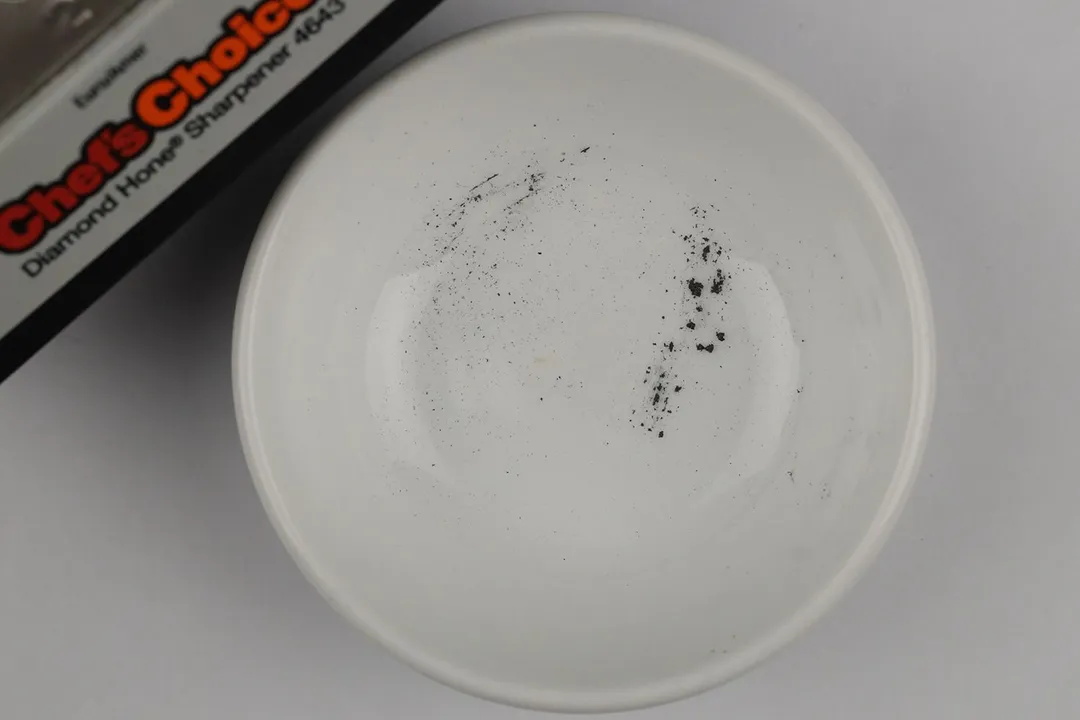
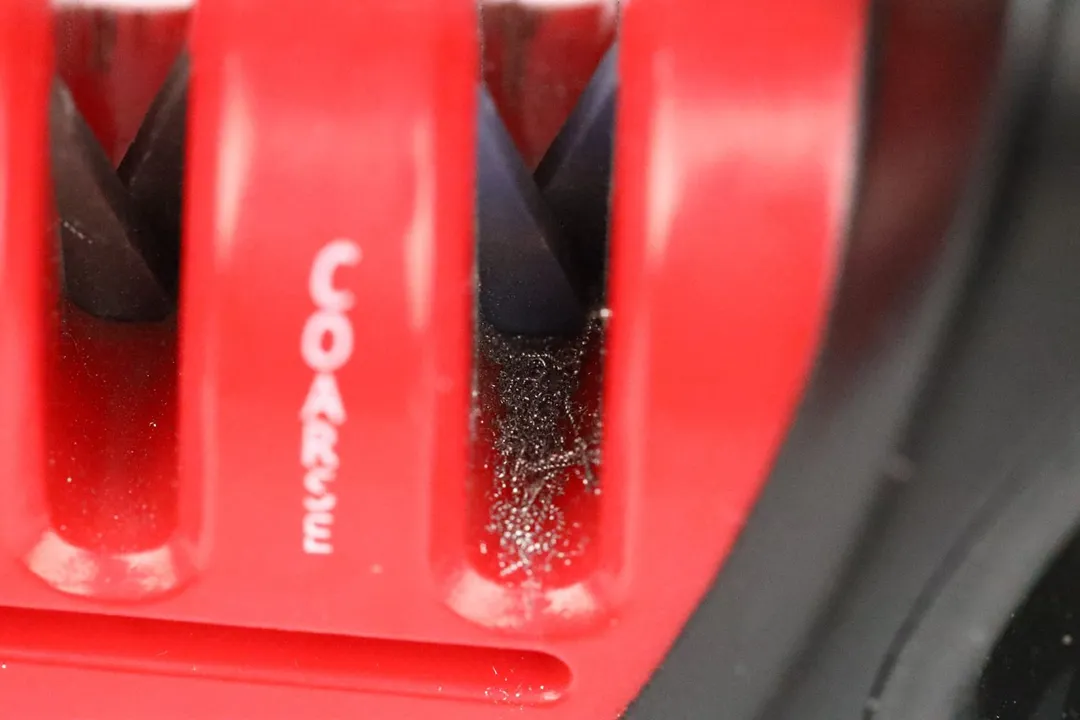
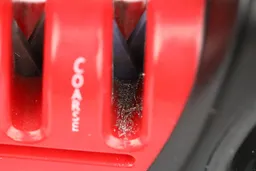
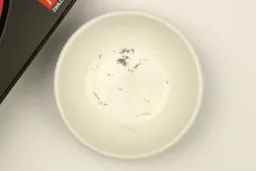
Maximum Sharpness Achieved
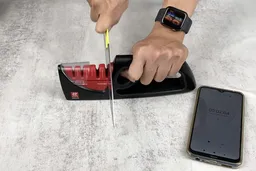
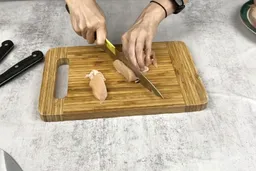
Edge Smoothness
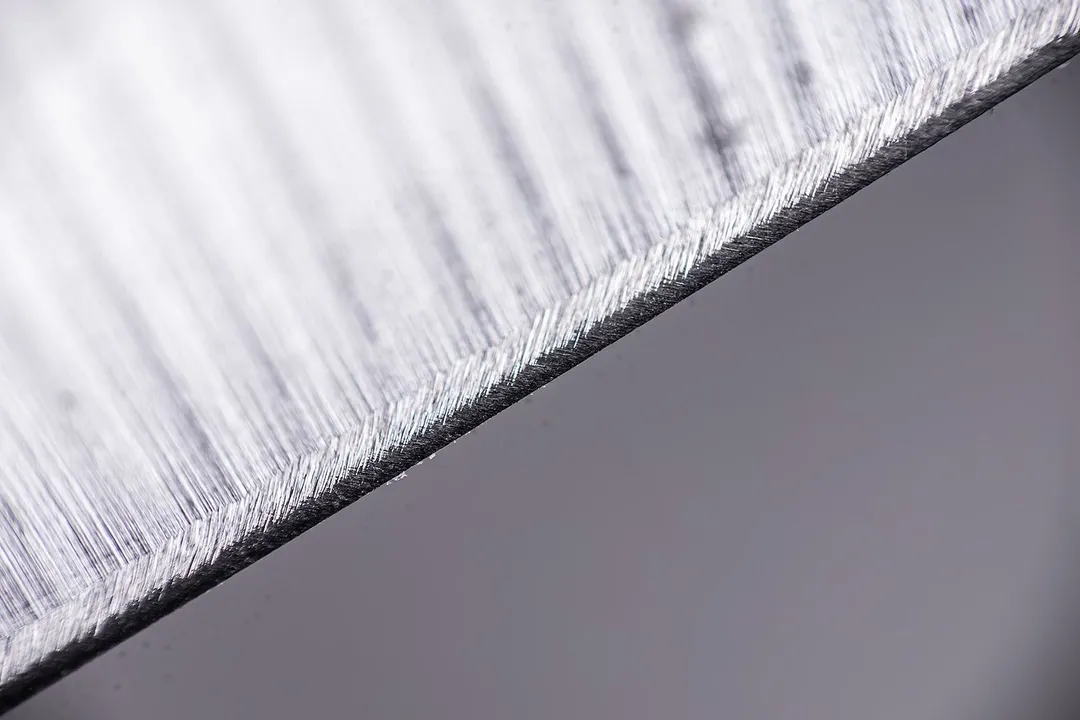
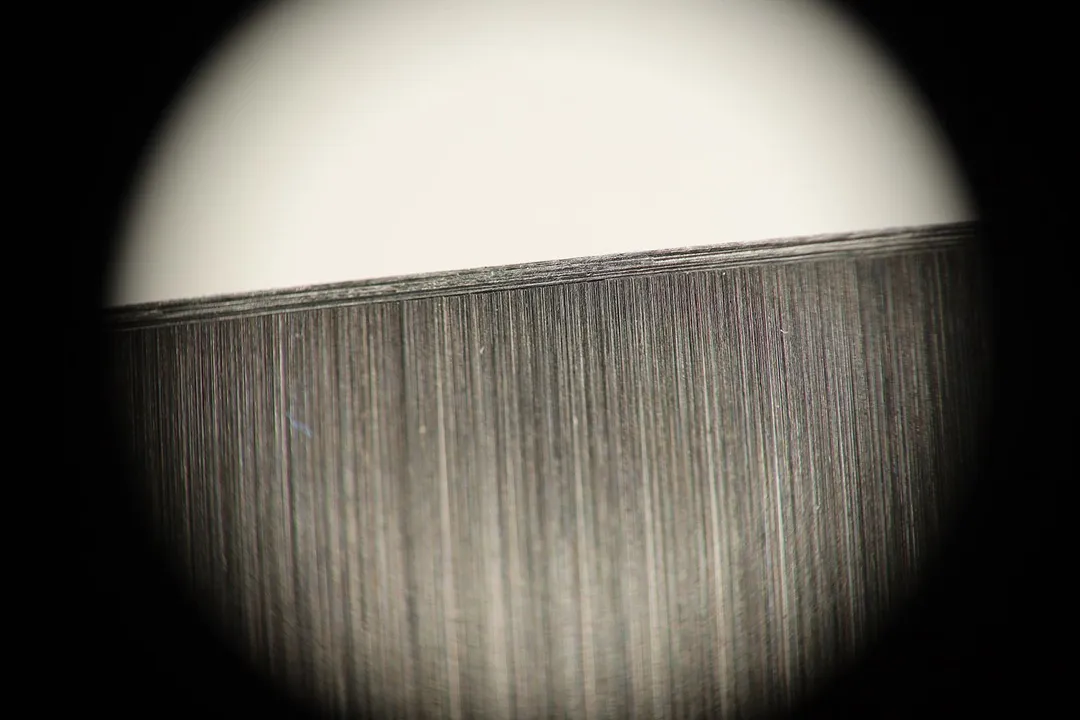
Design
In the Box
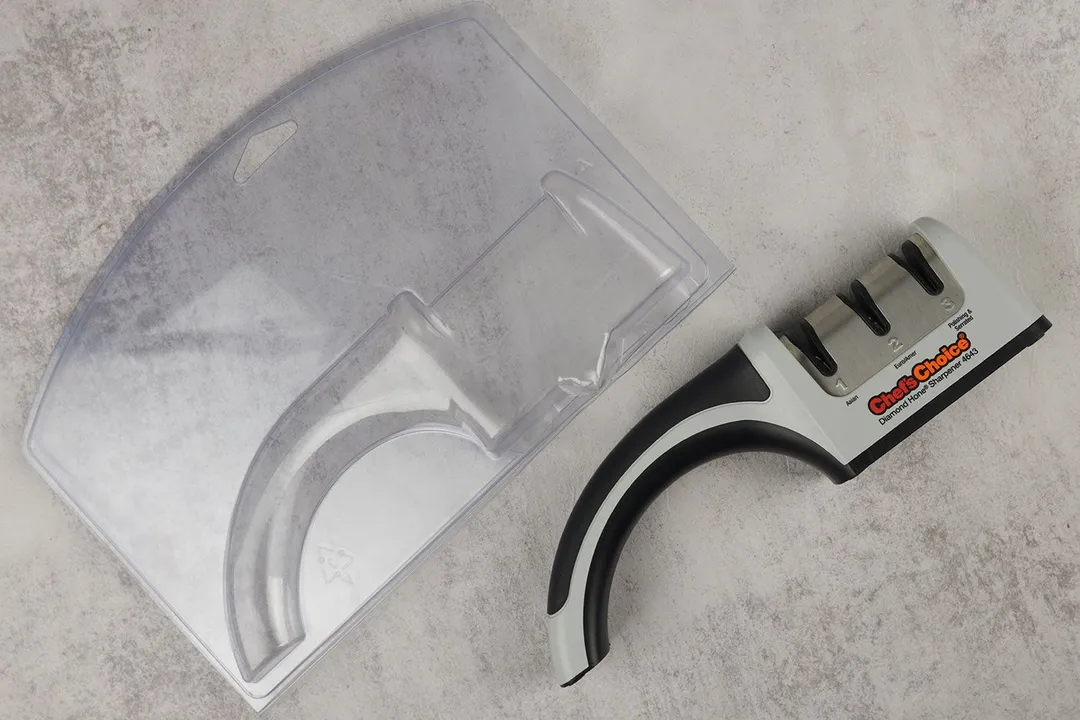
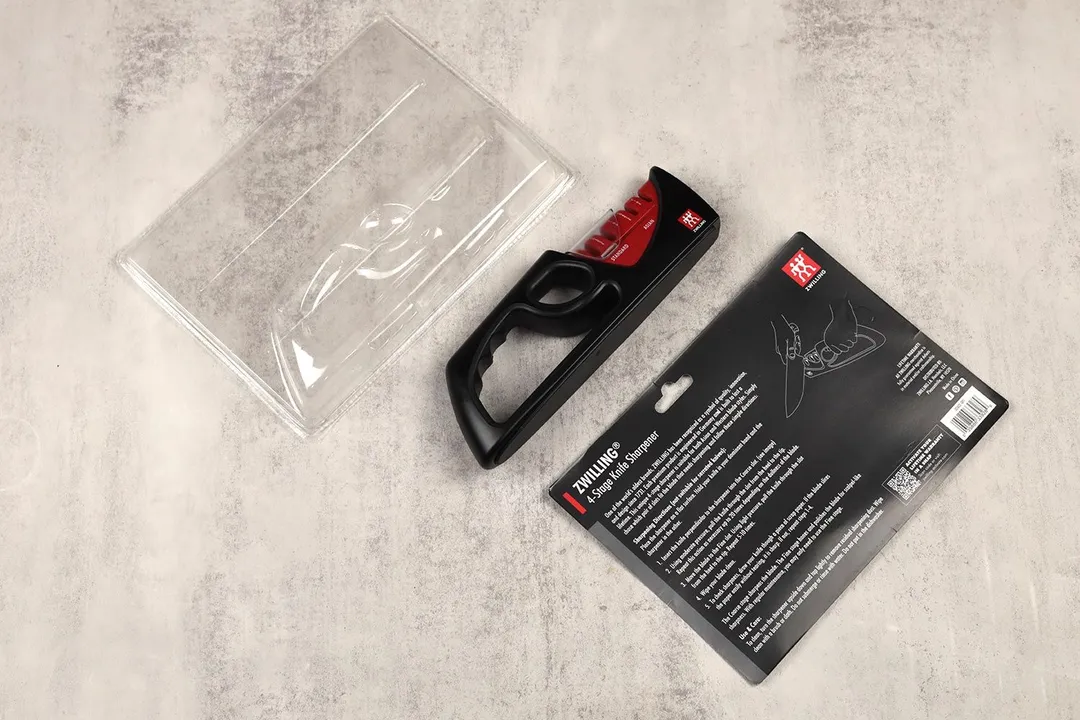
Dimensions
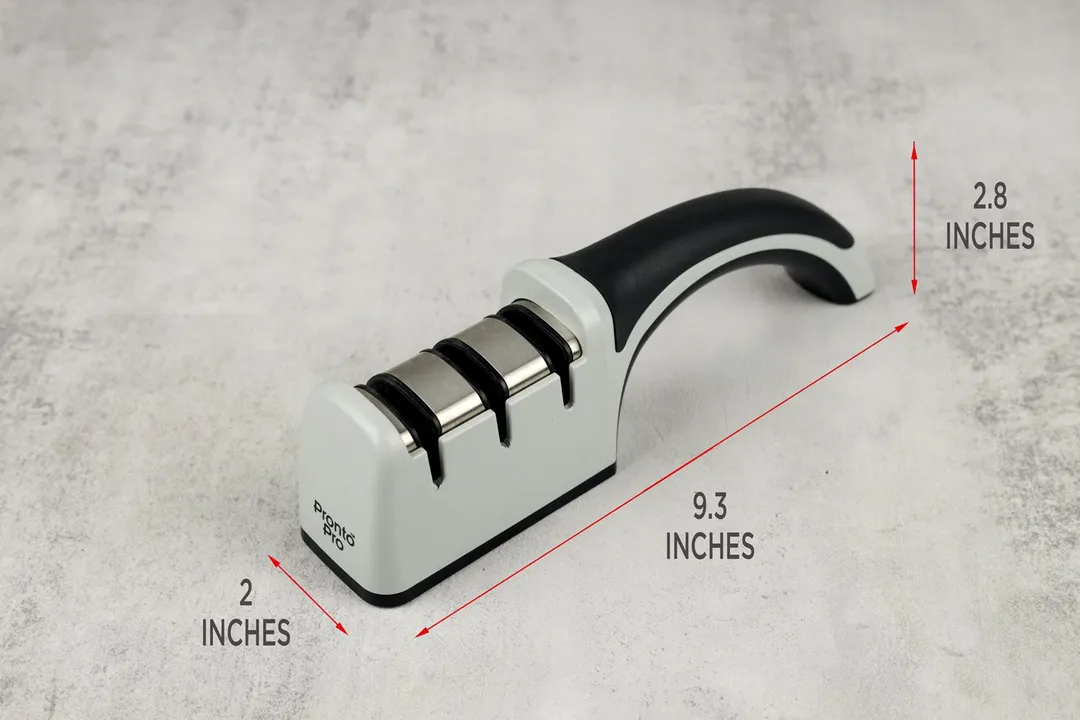

Build Quality
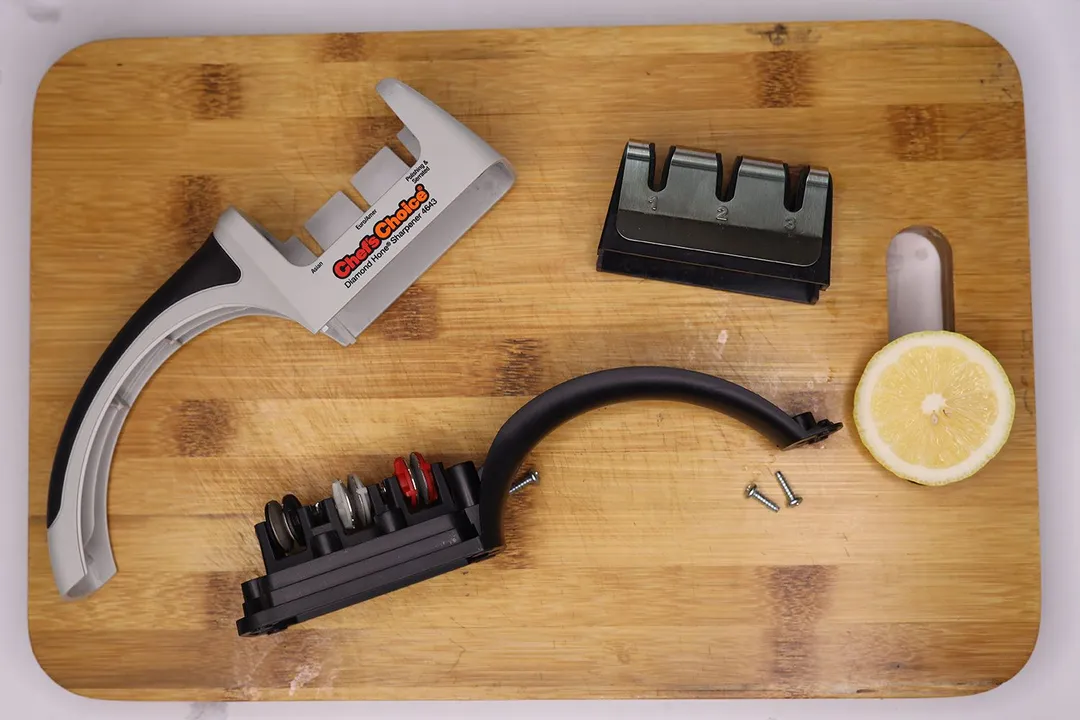
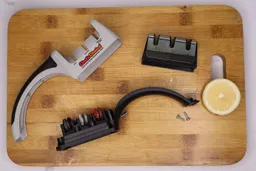
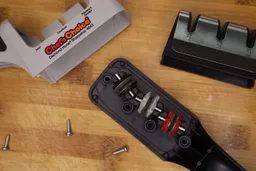
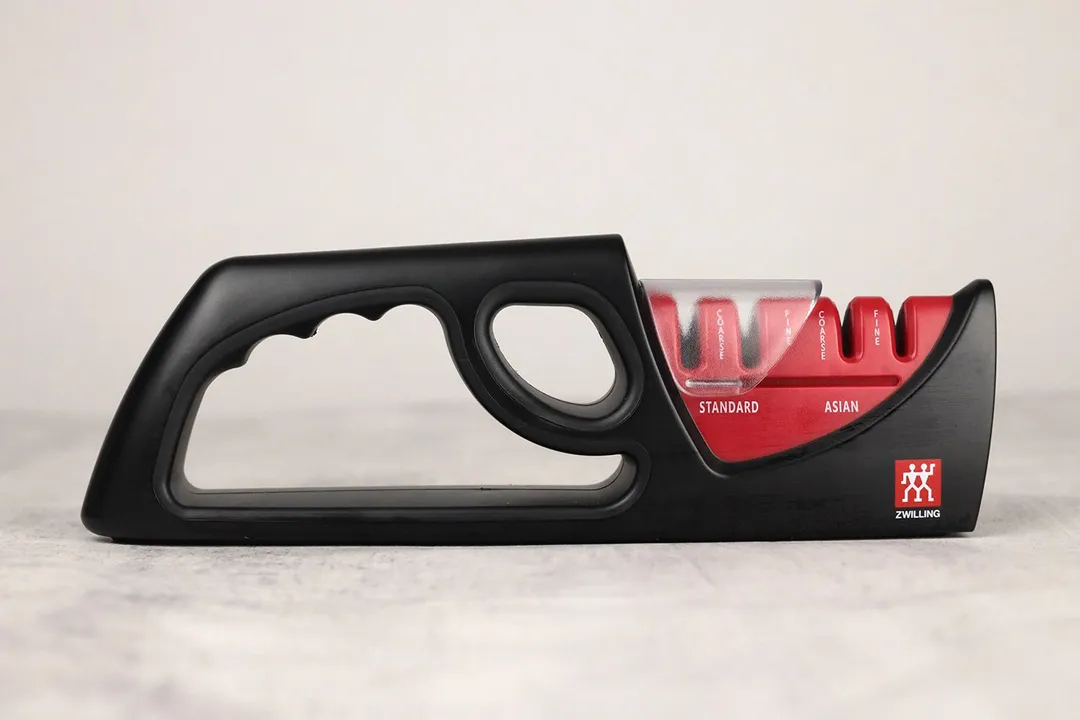
Working Section
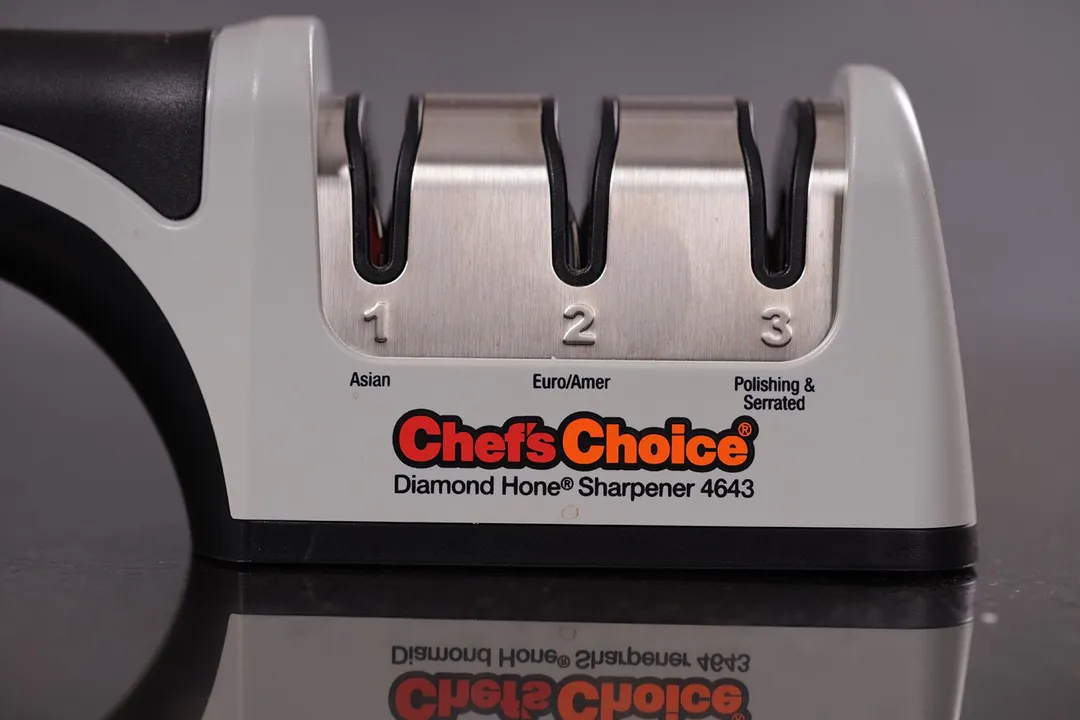
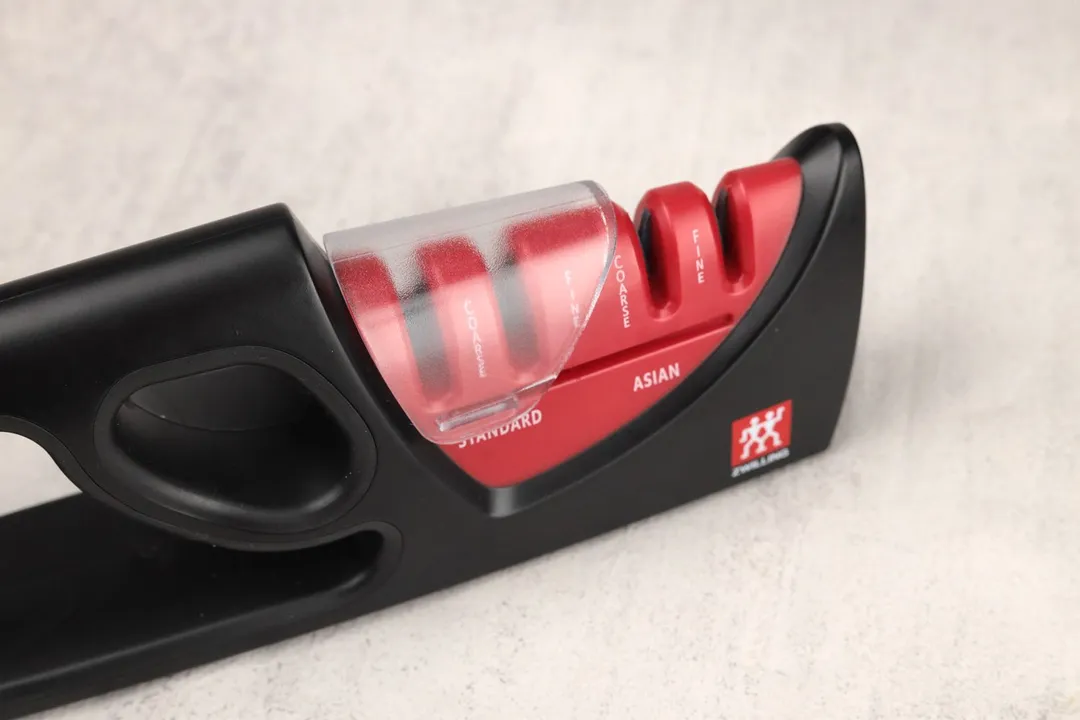
Base

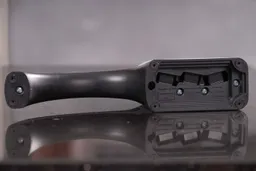
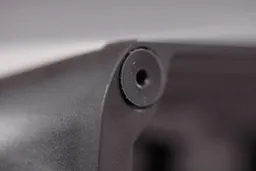

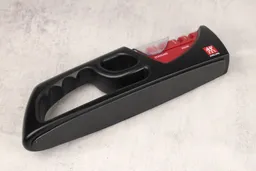

Grip

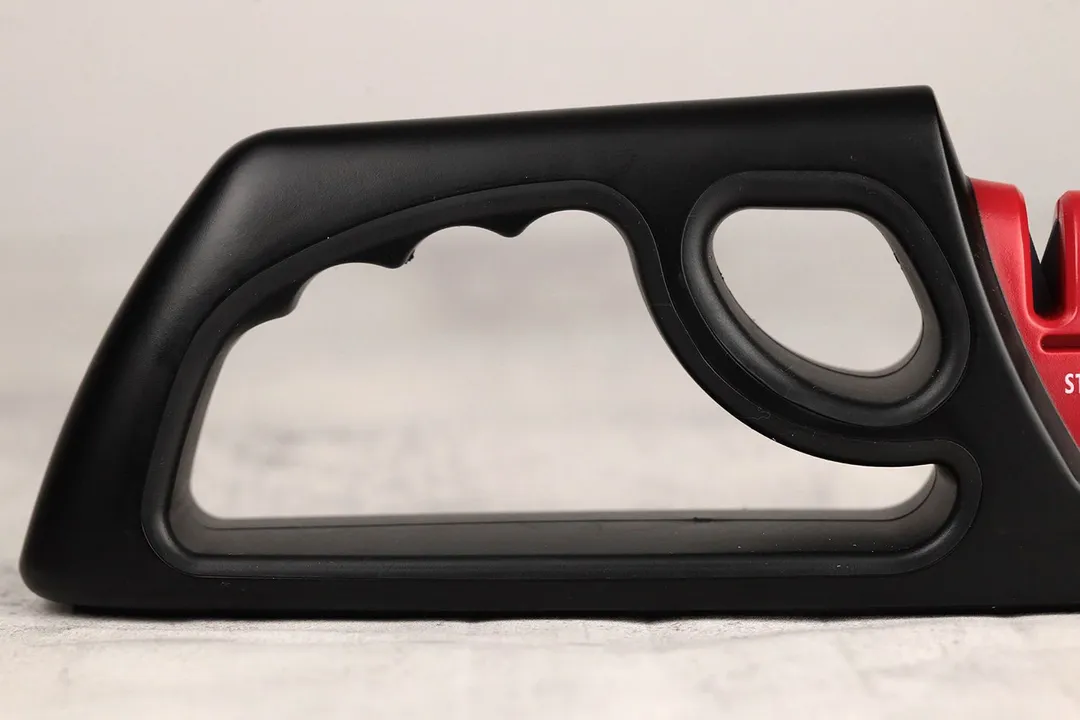

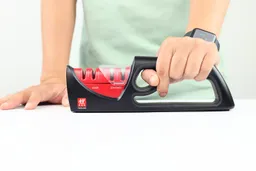
Usability
Slot Arrangement
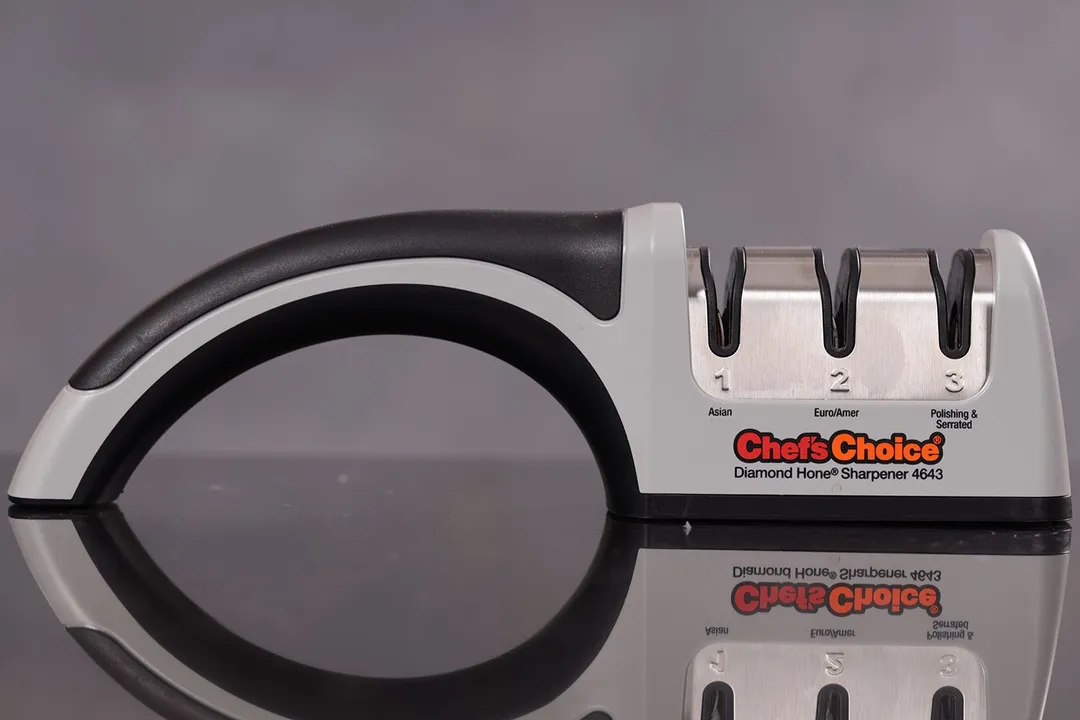

Insertion

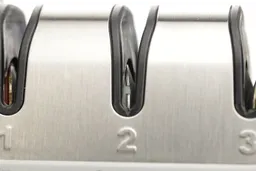
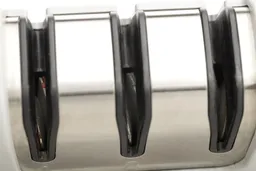
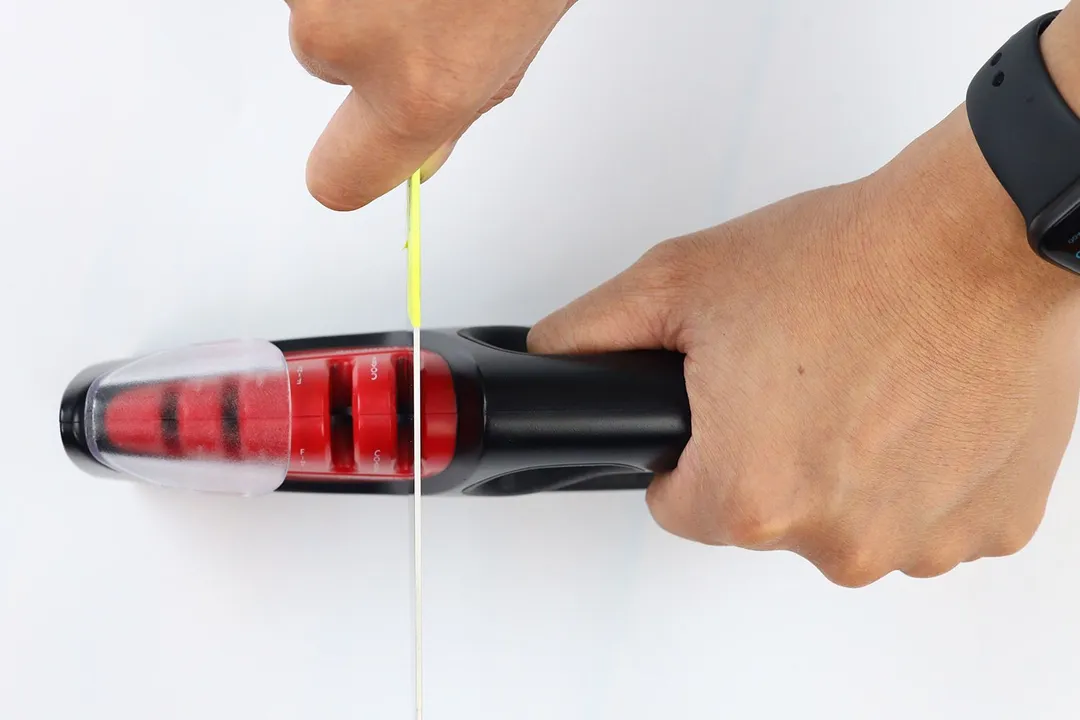
Pulling Through
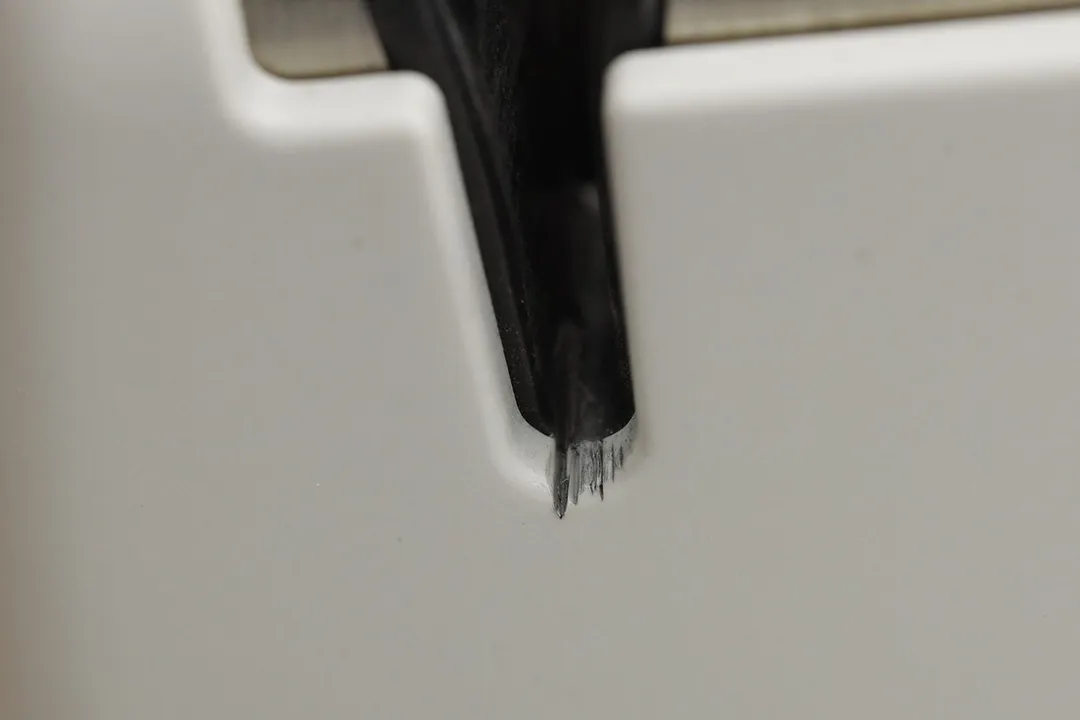
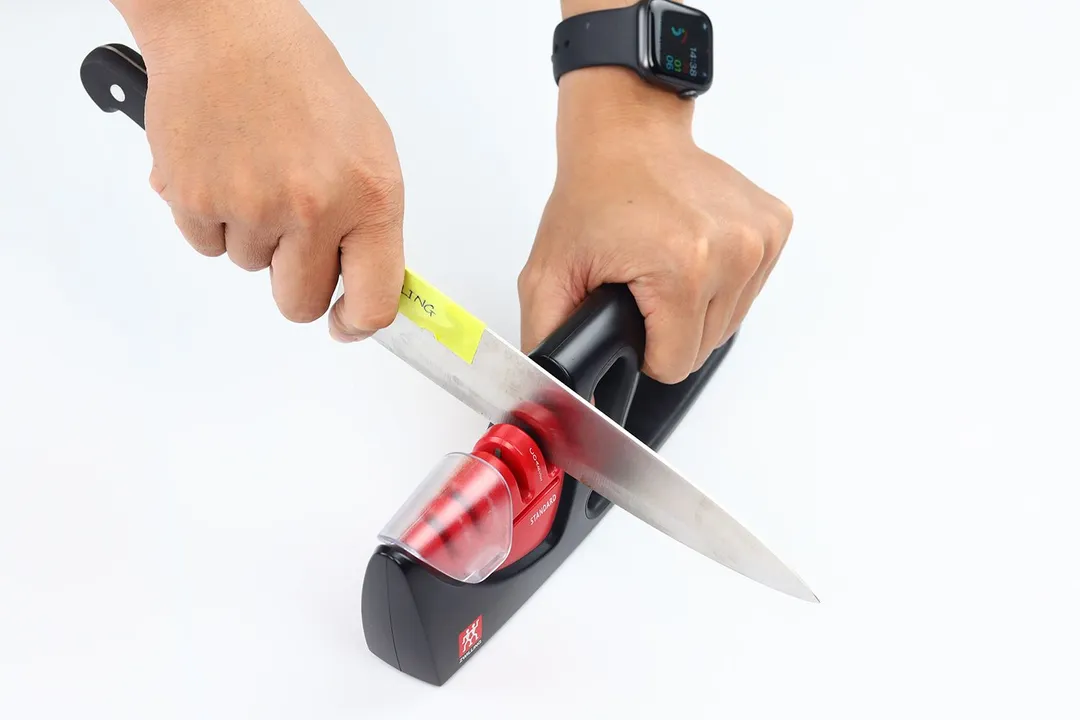
Stability on a Clean Surface
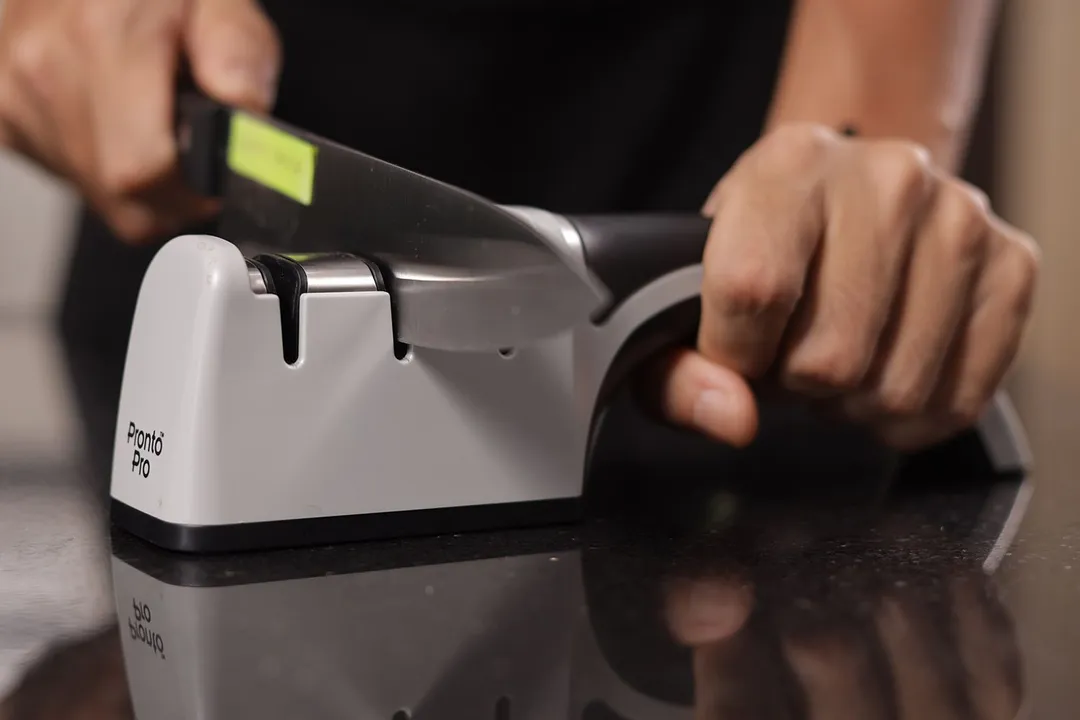
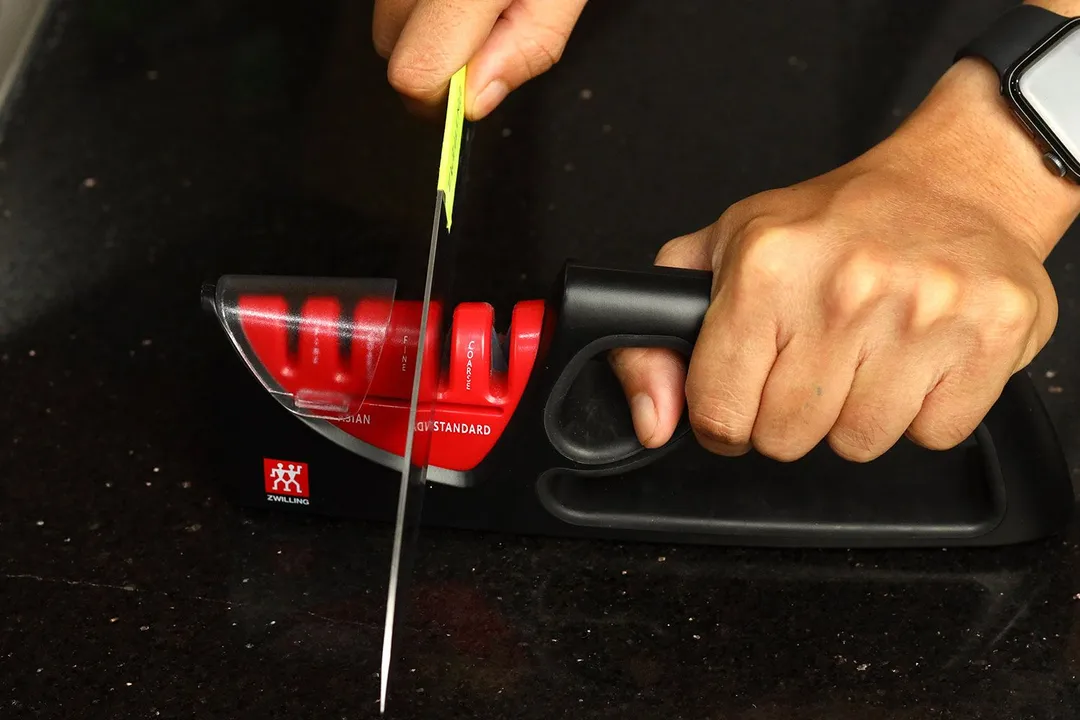
Stability on a Wet and Dirty Surface
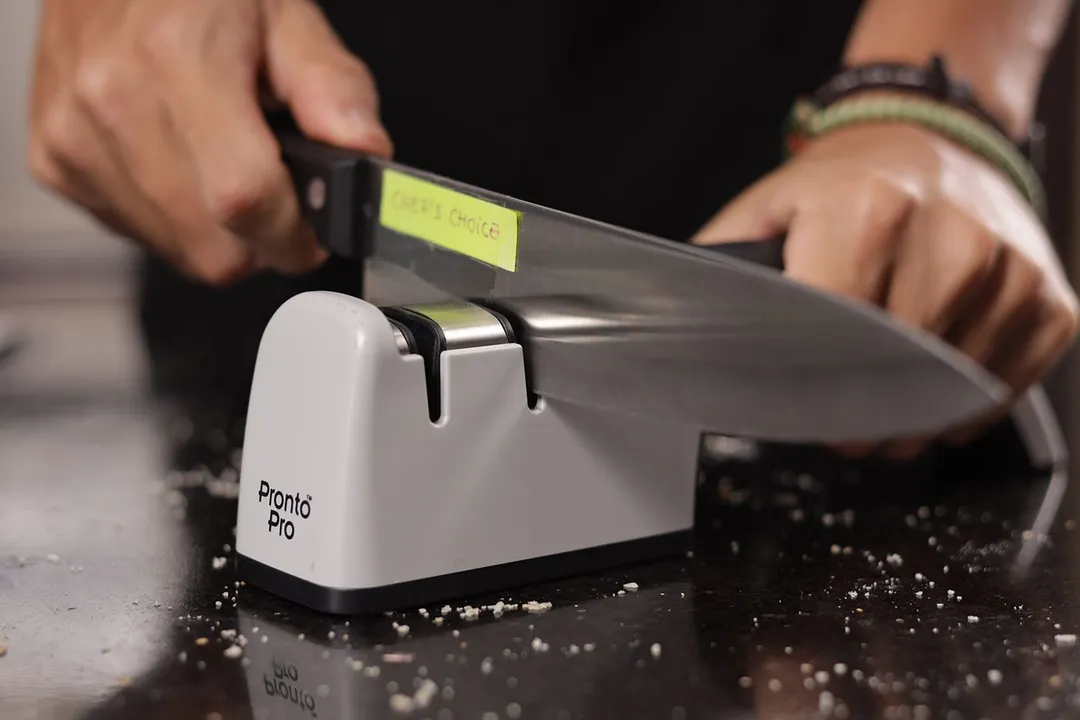
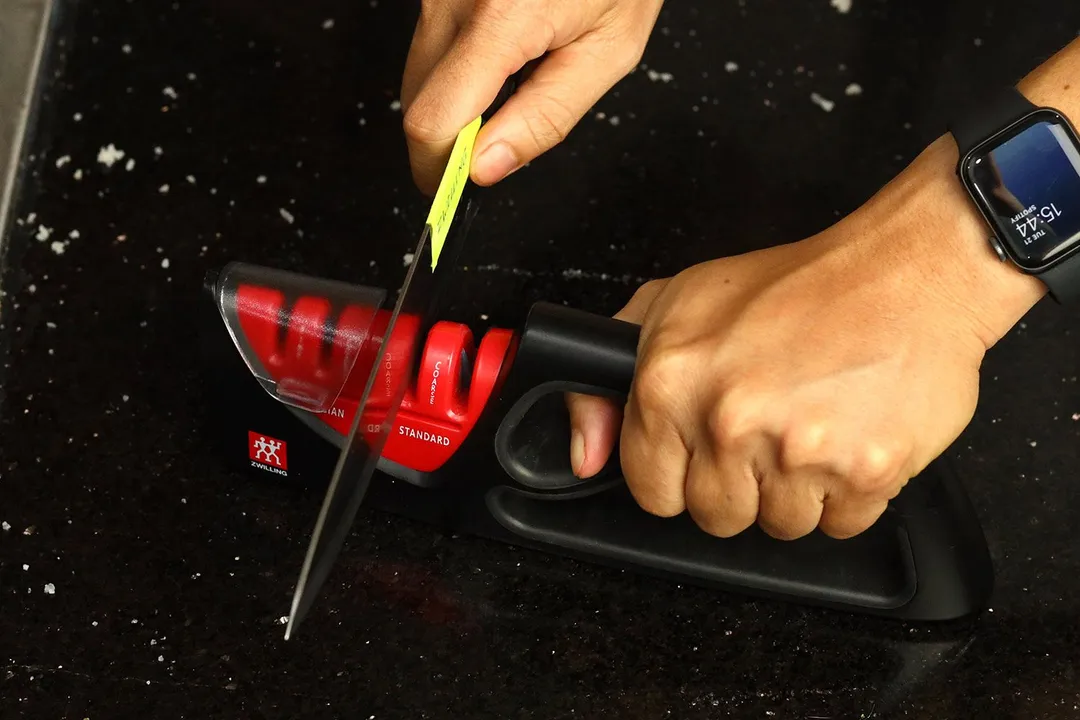
Behind the Comparison
Anh Ngo is a writer with 9 years experience at different media outlets, covering from public news and events to product testing and analysis. At HealthyKitchen101, she works across different departments, communicating closely with its network of writers, editors, and health, tech, and search engine experts to provide a meaningful and pleasant reading experience for visitors.
Lap is Head of the Research, Testing, and Review Team (RTR Team) at HealthyKitchen101.com, where he directs and supervises the testing of kitchen gadgets and appliances.
Nguyen Ntk is a graphic designer, photographer, and videographer whose philosophy centers around respecting and celebrating the beauty of reality. Through his lenses, Nguyen strives to capture the true essence of objects and events, showcasing and highlighting authentic features without distortion or exaggeration.



